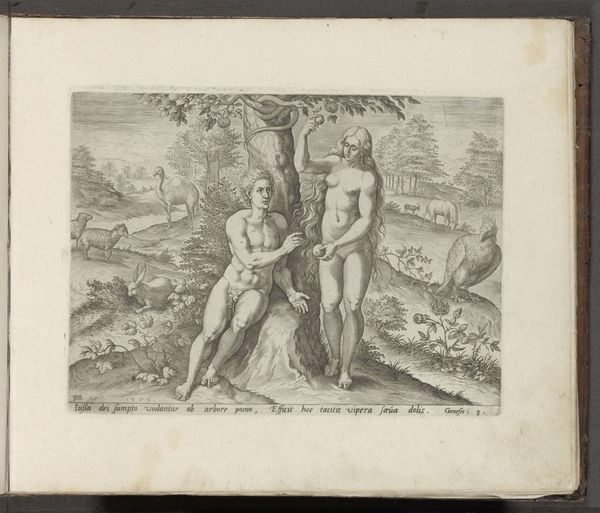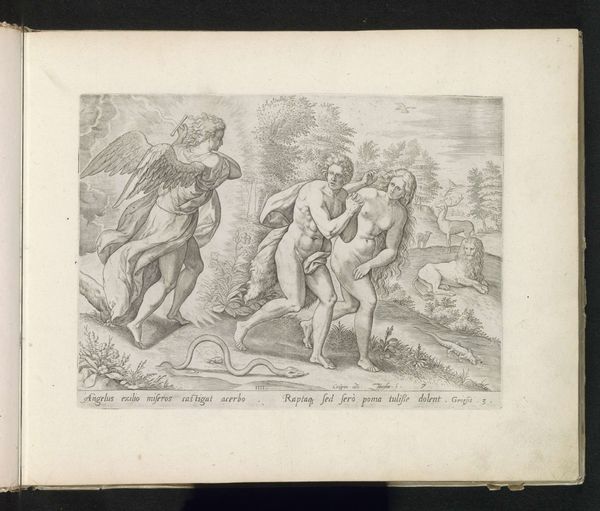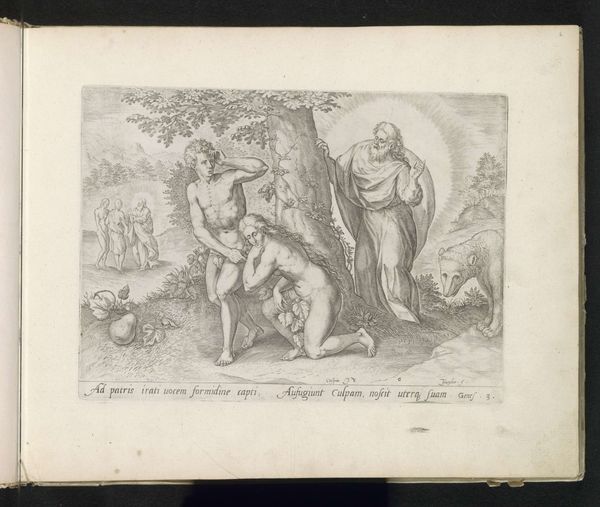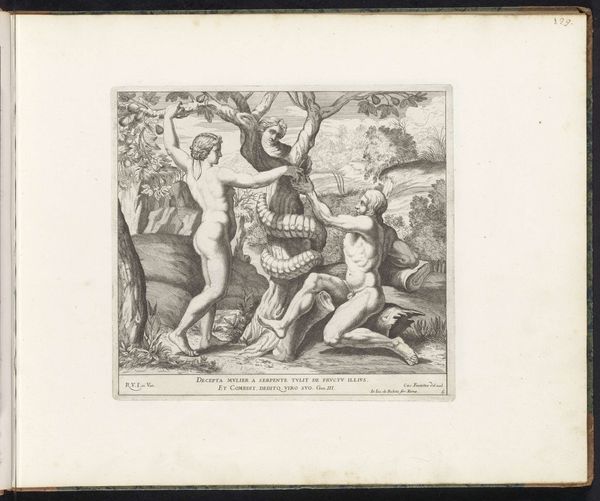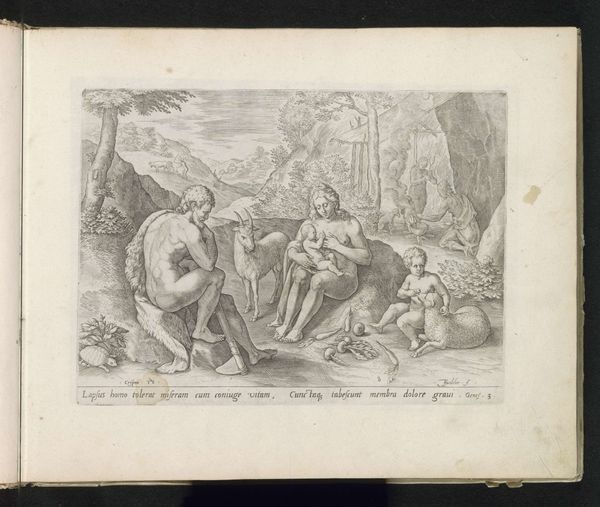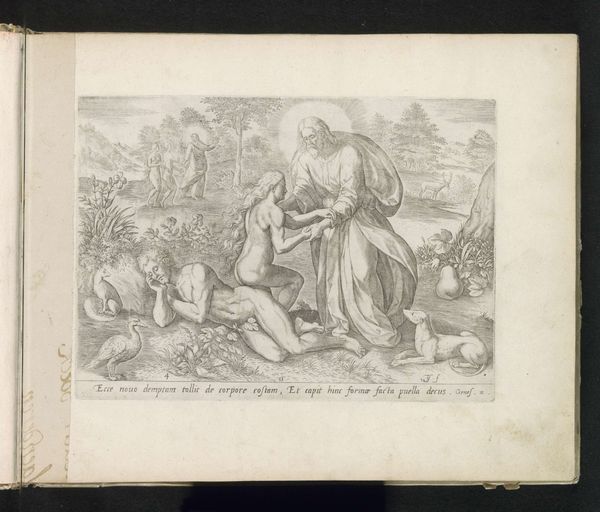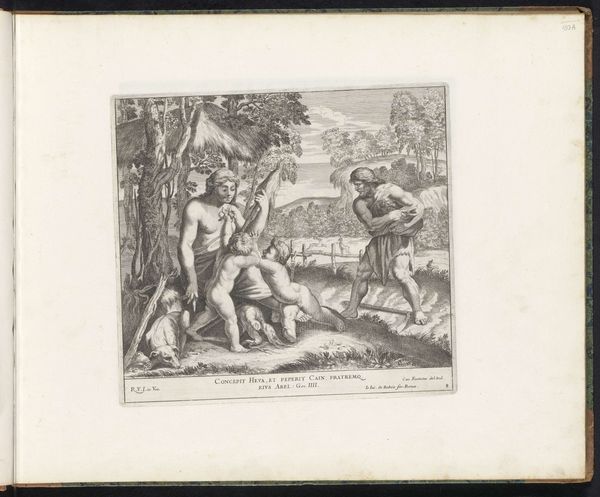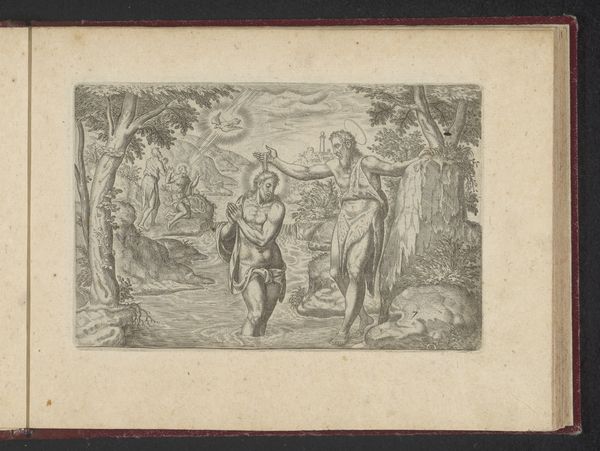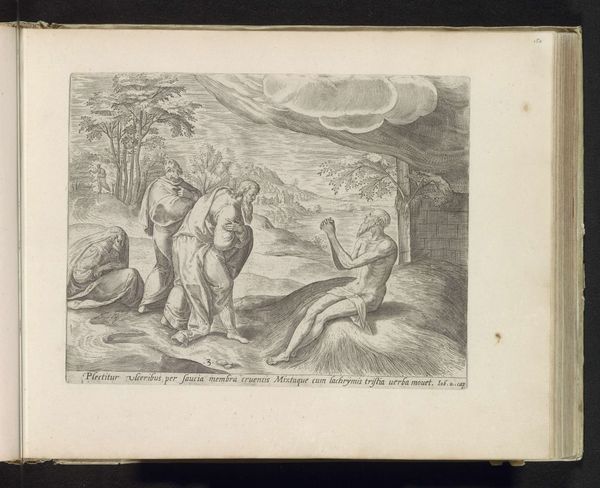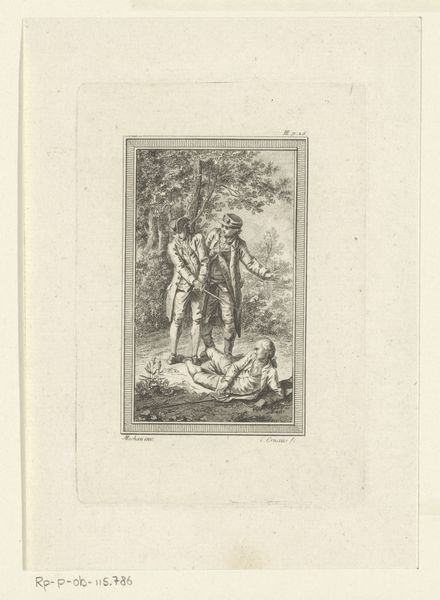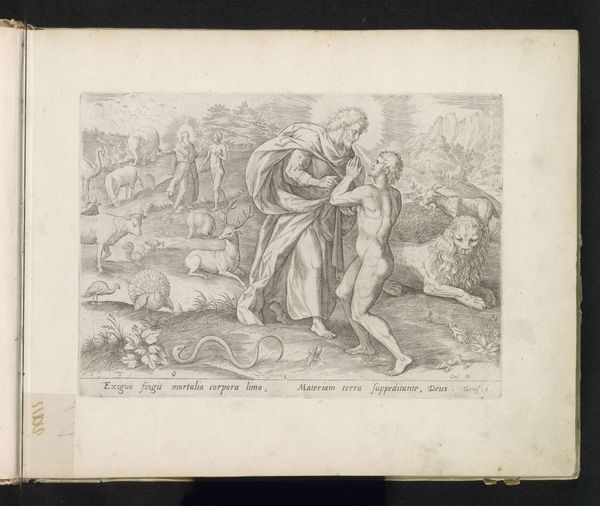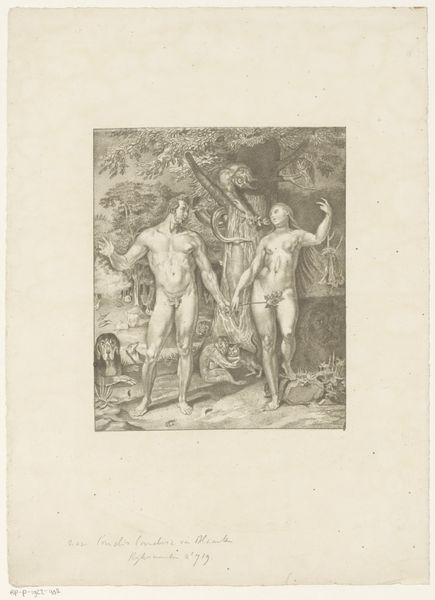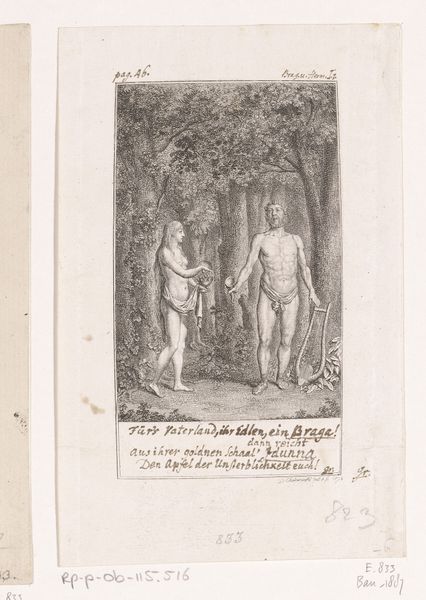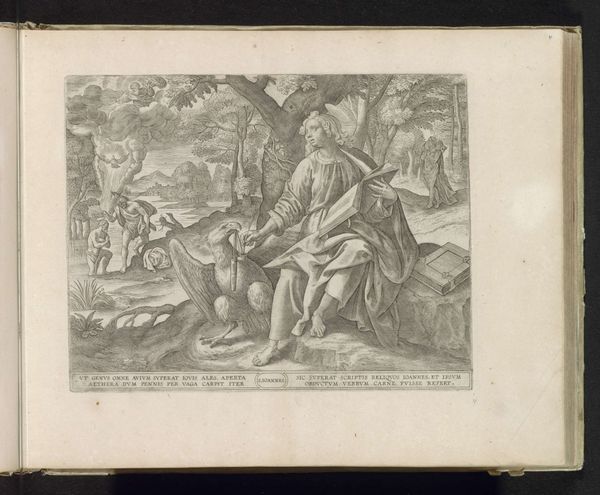
print, engraving
landscape
mannerism
figuration
history-painting
nude
engraving
Dimensions: height 198 mm, width 267 mm
Copyright: Rijks Museum: Open Domain
Curator: This engraving, dating from 1575 to 1585, by Johann Sadeler I, depicts “Eva verleidt Adam van de boom te eten,” or "Eve Seducing Adam to Eat from the Tree.” It’s part of the Rijksmuseum’s collection. Editor: My first thought is how delicate yet unsettling this piece feels. The meticulous detail in the engraving is striking, but there’s also something quite sterile about it all. It reminds me of scientific illustration combined with a biblical allegory. Curator: That tension you're sensing is characteristic of Mannerism, the style to which Sadeler belonged. There's a deliberate artificiality to the composition, a kind of refined exaggeration. It also speaks to the artifice of the time – this image plays on very loaded ideas around female agency. Editor: Look at the lines! Notice how they flow and interact. See how Eve’s cascading hair mimics the curve of the snake wrapped around the tree—an overt visual connection. And, the strong verticals and horizontals create this very pronounced structure that's at odds with the emotional impact of the story it portrays. It’s all very balanced. Curator: Absolutely, but that balance belies the disruption. We're witnessing a key moment in Christian history and it reflects broader social and religious anxieties about knowledge, temptation, and gender roles. The idyllic landscape is a stage for a drama of disobedience. Editor: Also notice the placement of the animals. I see some are on the side of Adam, some on the side of Eve. Does the artist maybe intend to represent how all of nature will be affected when this event goes down? How they take sides? Curator: Very possibly. Artists often use these symbols and this reflects anxieties in society. How certain attributes were often mapped into these genders. We have a distrust of femininity playing out here. Editor: A lot to take away from this tiny piece! I had to really zoom in to notice things like that! Curator: It really is. And in some ways, it’s a microcosm of the larger cultural and political landscape of 16th-century Europe. Editor: Exactly, thank you!
Comments
No comments
Be the first to comment and join the conversation on the ultimate creative platform.
